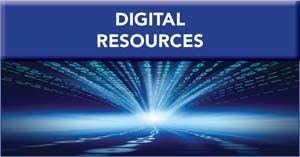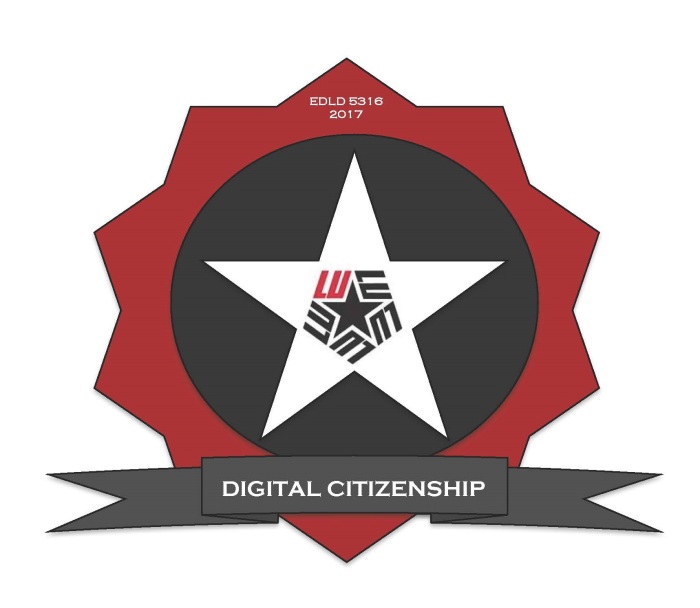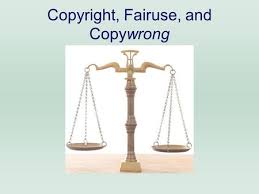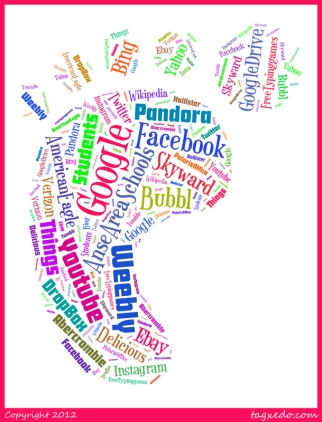Blended Learning Effect on Student’s Academic Success
In the last decade, technological advancements have changed the face of education. Learners are growing up in a world where information and opportunities are just a finger tap away. Before school systems were founded, kids studied on an individual basis within the family unit. Over time, however, people grew, and societies molded. The schools were established to make information more accessible and available to everyone. In today’s education system majority of students are still attending traditional seat-based model, however, some families are looking for different alternatives that meet their child-centered educational needs. School isn’t the only choice for education anymore. There are so many communication and collaboration facilities for students to learn and work together. Nowadays, homeschool is seen as one of the most popular alternative ways to schooling by many families.
Through reviewing current trends, case studies, and articles, I have tried to obtain relevant information to support my Blended-Homeschool Project. And my research has been backed up in a strong way. The purpose of my research was to determine if a blended learning approach has a positive effect on the homeschool students’ academic achievements.
Keywords: Blended- learning, information and communications technology, professional development
Homeschooling – that is, parent-driven home-based instruction; home education – is a well-established traditional educational practice that, a decade ago, seemed to be innovative and “alternative” but is now verging on “standard” in the United States. (Ray,2015)
There are many reasons why parents settle on homeschooling, including disappointment with the public-school environment, instructional methods, or stuffed classrooms; want to join (or prohibit) certain religious beliefs; fear of school aggression; and the need to tailor instruction for special-needs students, just a few of them (Newton and Chittom,2016).
Definitions, Features,and Models of Blended Learning
There is a wide variety of explanations about blended learning, however, there is still misperceptions and misunderstandings about what it means. The definition varies from one school to another. One school’s “blended” could be another school’s “hybrid”, or another school’s” mixed-mode”. Since there is no well-defined meaning, blended learning is perceived as some unclear mixture of face-to-face and online instruction (Manninen,2014). The Clayton Christensen Institute for Disruptive Innovation (2016) provides the most far-reaching definition of blended learning, explaining: “Blended learning involves leveraging the Internet to afford each student a more tailored learning experience, including improved student control over the time, place, path, and/or pace of learning” (n.p.). It is obvious that if novel technologies progress, blended learning definition will keep on changing.
Defining Blended Learning Models
Even though there are many forms of blended learning models, there is no accepted classification yet. These are some of them to consider: face-to-face driver model, rotation model, flex model, online lab model, self-blend model, online driver model.
Ash (2012) identified three blended learning models:
Rotation model: Within a given course or subject, students rotate on a settled timetable or at the educator’s tact between learning modalities, no less than one of which is web-based learning (Carman,2014).
Flex Model: Instructions can always be derived from the internet and learners can move onward by self-centered schedules.
Self-blend Model: The self-blend model students take no less than one courses online to complement their traditional school’s curriculum. The online learning is always remote, which differentiates it from the online-lab model. All supplemental online schools that offer individual courses to individual students support self-blending (Staker, H,2011).
Why Blended-Learning?
Blended-Learning looks promising for our future education system. In the last decade, blended learning model has been gaining considerable attention across the nation as it brought-and still brings-education to life in the classroom, life at home, and life anywhere outside the walls. It combines traditional face to face classroom learning and web-based learning through the internet. Moreover, it allows students to grow at their own pace and provides the essential skills for this century (Horizon,2016).
Arnet, (2016) has mentioned that blended learning’s most powerful potential benefit is the fact that it can help educators to create an achievement-oriented culture in their classrooms. In addition, he indicates that the real enchantment of the blended learning model comes not from the technology itself alone, but from the ways the technology transforms how educators engage with and motivate their students (Arnet,2016). Osguthorpe and Graham (2003) classified six distinctive reasons that one might choose to use blended learning system: (1) pedagogical richness, (2) access to knowledge, (3) social interaction (4) personal agency (5) cost-effectiveness, and (6) ease of revision. Advocates say the advantages of mobile learning far outweigh the potential drawbacks (Shuler, 2009). Blended learning seems to outperform traditional classroom instruction in terms of effectiveness (Bernard, Borokhovski, Schmid, Tamim, & Abrami, 2014).
Moskal, Dzibuan, and Hartman (2013) expressed that blended learning has numerous advantages such as decreasing the workload of faculty members, leading the way for courses which have an innovative strategy, operative participation of learners and rich learning outcomes. In addition, it is also stated that communication and collaboration between students themselves and with the teacher increase as well (Joliffe, Ritter & Stevens, 2001).
In current education systems, students are a passive audience of lecture, the viewer of slides, note taker of lessons. Blended learning is a student-centered model that allows the learner to take his own learning responsibility. Blended learning gives the learner the chance to interact with other students, educators, and content through the online and face-to-face environment. Schools can enhance conventional classrooms by investigating blended learning choices that customize instruction (DeNisco,2014). Studies from associations such as Stanford University and the University of Tennessee have provided critical information about why blended learning is better than both traditional methods and individual forms of e-learning technology alone. With current information systems, instructors have an upgraded student information promptly and reliably available. According to the Horizon 2016 report, there will be rising amounts of online and blended learning offerings that complement traditional classroom activities. As the report notes, this can take many different forms from virtual laboratories to flipped classrooms. In education, the elements of online and face-to-face are stronger together than apart. Therefore, they must be implemented together. The power of blended learning also comes from online learning. Both the students and the teachers can be more technology literate with Blended Learning since this model corporates with technology. Blended Learning maintains deep learning by promoting continuous learning approaches.
In K–12 education, a recent study by the North American Council for Online Learning predicted that the blended approach is likely to emerge as the predominant model of instruction and become far more common than either conventional, purely face-to-face classroom instruction or instruction has done entirely online (Watson, 2008). Student fulfillment with the blended format is straightforwardly reliant upon the level of collaboration with educators and other learners. Instructors can build collaboration opportunities through face-to-face and personal dialog sessions. To engage with parents and school community, they can use ICT devices, for example, discussions, virtual conferencing, virtual world and web-based games, and utilizing portable tools, such as flip cameras and voice recorders.
IMPACT OF BLENDED-LEARNING ON STUDENT SUCCESS
Many educators want to identify whether blended learning has a positive influence on learners’ success. There are some inquiries that have been organized a few years ago, SRI international carried out these researchers about Blended learning from 1996-2006. In accordance with these studies’ outcome, blended learning courses surpassed those in fully-online or fully in-person courses. Researched audiences were college students or adult professional students. In 2013, K-12 Online learning, or INACOL in 2013 has conducted a study about Blended learning. It provides an outline of the literature on blended learning for the earlier few years, observing at explanations of the term, models and approaches, tools for personalization, designs of blended learning systems, and standards for proficiency in education. Michael & Susan Dell Foundation led SRI International and published in 2014. The report searched 13 low-income charter schools utilizing a rotation model of blended learning. The research focused on learner production, teacher approval, and the practice of data to give information about instruction. On the STEP literacy assessment, the percentage of students reading at “proficient” or “advanced” levels increased from 36% to 96%. On the MAP* test, 96% of KIPP Empower’s students in both reading and math, performed above the national average by the end of the school year.
National Education Policy Center conducted an inquiry about tailored instruction and distributed in 2013. It observed approaches for effective personalized learning and pointed out that a blend of tech-based and person-to-person based education indicates the greatest possible academic gains. To complement this, AND Corporation conducted a two-year study where they examined the efficacy of a technology-based algebra curriculum in many middle schools and high schools and published the result in 2013. In the first-year study, they found no remarkable outcome, then in the second-year, high school students utilizing the program enhanced their performance. Evaluation of the MIND Research Institute’s Spatial-Temporal Math (ST Math) Program in California,” organized by WestEd in 2014. The report observed the game-based, blended learning math instruction program and determined that as fully executed, it upgraded students’ math scores considerably.
Regarding technology tools and their potential pedagogical impact on student learning, Hew & Cheung (2012) analyzed experimental studies in which Web 2.0 tools were employed in K-12 and higher education settings to determine their impact on student learning. Results indicated that the impact of podcasts, wikis, blogs, Twitter, and the use of virtual worlds was either positive or neutral.
Information and Communication Technologies (ICT)
Currently, Information and Communication Technologies(ICT)are accepted to be the most influential tools for the help of the teaching and learning process. The success of ICT integration relies profoundly on these three factors: school infrastructure, technical support, and teacher assistants (Venezky, 2014). In recent years many studies had been conducted around the world to see whether ICT help to broaden access to education and improve learning outcomes or not. The case studies examined the factors associated with the adoption of the technology and the patterns of distribution of ICT usage through schools.
Technology usage is rising every day and technological innovations have a moderate impact on students’ success (Ecar, 2015). Information and communication technologies provide exciting possibilities to enhance the quality of education. A well-designed classroom is essential and has a major effect on learning as it leads to inspirational teaching methods and learning styles (Meeker, 2015). Teachers or learning coaches should design their learning space according to their class needs.
Education can be enriched by integrating ICT into traditional educational activities because ICT has the capacity to enhance the learning process. The movability of mobile technologies enables students to access resources and collaborative tools almost flawlessly as they make their personal and educational activities (Corbeil and ValdesCorbeil, 2007; Park, 2011; Wallace, 2011).
ICT must be used to cultivate deeper, inquiry-based learning rather than just providing content. In North America designing the learning spaces was very innovative and it fostered collaborative learning. (Fritschi & Wolf, 2012).
CHALLENGES IN IMPLEMENTATION OF MOBILE LEARNING
There are some barriers to mobile learning like cost of mobile devices, concerns about the misuse of mobile devices, teachers, and parents’ mindsets and attitudes, lack of teacher training and support. Even though students are using technology extensively in their classrooms, it is obvious that these technological tools not used potentially for academic purpose (Ecar, 2015). Mobile phones are generally considered to be disturbing to education and their use in school is constrained in many European countries. Parents and teachers assume that the devices are little more than distracting toys with limited educational value. Many parents and educators also worry that mobile phones enable inappropriate behaviors like cheating and cyber-bullying.
The ‘distraction factor’ is the primary concern that has led many districts to ban mobile devices from school altogether (Wallace 2011). Many people believe that allowing students to use mobile devices in school would disrupt rather than enhance learning. The Eurydice network, which collects and compiles data on education and training in Europe, published a report in 2009 on the safe use of mobile phones (EACEA/Eurydice, 2010). The report has stated that cyberbullying in schools has become a topic of growing concern in the last few years.
Inappropriate student behavior, including cheating, cyber-bullying and ‘sexting’ is a major concern for administrators, teachers, and parents in Europe. According to recent studies: One-third of teens with mobile phones have admitted to cheating with them, and two-thirds of all teens have reported that others in their school cheat with mobile phones (Common Sense Media, 2009). Twenty-six percent of teenagers have stated receiving bullying or harassing text messages or phone calls (Lenhart et al., 2010). Four percent of teens have informed sending a sexually inappropriate image via text message, and fifteen percent have reported receiving a text of that kind (Lenhart et al., 2010).
According to the UNESCO in North America, perhaps the biggest obstacle to mobile is learning is the way people feel about mobile phones in education. (Corbeil and Valdes-Corbeil, 2007).
MOBILE TECHNOLOGIES AND PROFESSIONAL DEVELOPMENT
Mobile technologies can also support teachers personalize their own professional learning (Bjerede and Dede, 2011). Teachers who practice mobile devices have more flexible access to a wider variety of professional development options. Mobile courses and training programmes are being developed that deliver content in small growths, allowing teachers to take advantage of completing courses in five- to ten-minute intervals, rather than taking a lot of time from their already busy schedules (Vanthournout and Koch, 2008). Teachers are using smartphones, laptops, and tablets to engage and enliven their classrooms. However, faculty and students need support and training to improve digital literacy (Horizon 2016).
Conclusion
Now, in the center of an informational transformation, parent-teachers have the duty to think cautiously through what model to choose for their children. Technology has affected all kinds of education, including homeschooling. Parents can select options to completely customize their child’s education. There are a wide variety of support systems, curricular materials, and online support services available at any time and at anywhere. ICT tools have opened teachers’ and learning coaches’ horizon. Today’s educator’s job is easier with access to almost limitless content and they have potential to be better educators with these facilities. The influence on the K-12 system has been intense on education. Through online courses, great instructors, and limitless information, the intimidating part of homeschooling has disappeared. The homeschooling is now more about pondering through what parent-teachers want their child to learn and study. There are many websites to support learning coaches to do that. The diverse types of ICT tool provide opportunities for the socialization deficiencies of homeschooling. Although it is difficult to see what the future holds, we can be sure that blended learning holds great potential and will be growing in a few years. Now, there are many beneficial reasons for teachers, coaches or learners to pick blended learning over other learning options.
References
Arnet, T. (2016, May 20). Blended learning can help students take ownership of their learning – Christensen Institute. Retrieved November 05, 2017, from Graham, C. R., Allen, S., & Ure, D. (2003). Blended learning environments: A review of the research literature. Unpublished manuscript, Provo, UThttp://www.christenseninstitute.org/blog/blended-learning-can-help-students-take-ownership-of-their-learning/
ASH, K. (2012). BLENDED LEARNING CHOICES. Education Week, 32(9), S4.
Bernard, R. M., Borokhovski, E., Schmid, R. F., Tamim, R. M., & Abrami, R. C. (2014). A meta-analysis of blended learning and technology use in higher education: from the general to the applied. Journal of Computing in Higher Education, 26, 87–122. doi:10.1007/ s1252
Chittom, L., & Newton, H. (2016). Home Schooling: An Overview. Points of View: Home Schooling, 1.
Clayton Christensen Institute for Disruptive Innovation. (2016). Blended learning. Retrieved from http://www.christenseninstitute.org/blended-learning/
Common Sense Media. 2009. Hi-tech cheating: What every parent needs to know. Retrieved from http://www.commonsensemedia.org/hi-tech-cheating
Corbeil, J. and Valdes-Corbeil, M. 2007. Are you ready for mobile learning? Educause Quarterly, Vol. 30, No. 2. Retrieved from http://www.educause.edu/EDUCAUSE+Quarterly/EDUCAUSEQuarterlyMagazineVolu m/AreYouReadyforMobileLearning/157455
Dahlstrom, E(August,2015).The ECAR Study of Undergraduate Students and Information.Technology.April20,2016.https://library.educause.edu/~/media/files/library/2015/8/ers1510ss.pdf?la=en April 20, 2016. http://cdn.nmc.org/media/2016-nmc-horizon-report-he-EN.pdf
Davis, M. (2015, April 13). Blended Learning Research: The Seven Studies You Need to Know. Retrieved November 05, 2017, from http://blogs.edweek.org/edweek/DigitalEducation/2015/04/blended_learning_research-_the.html
Dede, C. and Bjerede, M. 2011. Mobile learning for the 21st century: Insights from the 2010 Wireless EdTech Conference. Washington, DC. Retrieved from http://wirelessedtech.com/wp-content/uploads/2011/03/ed_tech_pages.pdf
DeNisco, A. (2014). Blended learning models taking hold in California schools. District Administration, 50(3), 82
DeNisco, A. (2014). Blended learning models taking hold in California schools. District Administration, 50(3), 82
Davis, M. (2015, April 13). Blended Learning Research: The Seven Studies You Need to Know. Retrieved December 08, 2016, from http://blogs.edweek.org/edweek/DigitalEducation/2015/04/blended_learning_research_the.html
Enyedy, N. (2014). Personalized Instruction:New Interest, Old Rhetoric, Limited Results, and the Need for a New Direction for Computer-Mediated Learning. Boulder, CO: National Education Policy Center. Retrieved [2016December,8] fromhttp://nepc.colorado.edu/publication/personalized-instruction.
Fariha, C. (2014). Getting Started with Blended and Online Learning. Retrieved November 4, 2017, from https://community.brightspace.com/servlet/fileField?entityId=ka1610000000p2kAAA&field=Attachment__Body__s
Ferrance, E. (2000). Action research: Themes in education. Retrieved November 5, 2017, from Brown University, Education Alliance, http://www.alliance.brown.edu/pubs/themes_ed/act_research.pdf.
Fritschi, J., & Wolf, M. A. (2012). Turning on mobile learning in North America. United Nations Educational, Scientific and Cultural Organization, 1-54.
Graham, C. R., Allen, S., & Ure, D. (2003). Benefits and challenges of blended learning environments. In M. Khosrow-Pour (Ed.), Encyclopedia of information science and technology (pp. 253–259). Hershey, PA: Idea Group
Hew, K., & Cheung, W. (2013). Use of Web 2.0 technologies in K-12 and higher education: The search for evidence-based practice. Educational Research Review, 9, 47–64. doi:10.1016/ j. edurev.2012.08.001
ICT in Innovative Schools: Case Studies of Change and Impacts (pp. 1-31, Rep.). (n.d.). Retrieved October 29, 2017, from http://www.oecd.org/site/schoolingfortomorrowknowledgebase/themes/ict/41187025.pdf
Joliffe, A., Ritter, J., & Stevens, D. (2001). The online learning handbook: Developing and using web-based learning. Kogan Page: Springer.
Lenhart, A., Ling, R., Campbell, S. and Purcell, K. 2010. Teens and mobile phones. April. Retrieved from http://pewinternet.org/Reports/2010/Teens-and-MobilePhones/Summary-of-findings.aspx
Manninen, J. (2014). Blended learning: Research perspectives, Volume 2. International Review
Of Education / Internationale Zeitschrift Für Erziehungswissenschaft, 60(6), 867. doi:10.1007/s11159-014-9458-5
Means, B., Toyama, Y., Murphy, R., Bakia, M., Jones, K., Department of Education (ED), O. D., & SRI, I. (2009). Evaluation of Evidence-Based Practices in Online Learning: A Meta-Analysis and Review of Online Learning Studies. US Department Of Education,
Meeker, M (May, 2015). Internet Trends 2015 Code Conference. Retrieved November 6, 2017 http://www.kpcb.com/internet-trends
Mertler, C. (2016). Action research: Empowering schools and empowering educators (5th ed.). SAGE Publications. Darling-Hammond, L. (2006). Securing the right to learn: Policy and practice for powerful teaching and learning. Educational Researcher, 35 (7), 13–24.
Meyer, C. (2008). The Handbook of Blended Learning: Global Perspectives, Local Designs. Quarterly Review Of Distance Education, 9(2), 211-214.
Moskal, P., Dziuban, C., & Hartman, J. (2013). Blended learning: A dangerous idea? The Internet and Higher Education, 1–9. doi:10.1016/ j. iheduc.2012.12.001
Osguthorpe,R.T.,&Graham,C.R.(2003).Blended learning systems:Definitions and directions.Quarterly Review of Distance Education,4(3),227-234
Pane, J. F., Griffin, B. A., McCaffrey, D. F., & Karam, R. (2014). Effectiveness of Cognitive Tutor Algebra I at Scale. Educational Evaluation And Policy Analysis, 36(2), 127-144.
Ray, B. D., & National Home Education Research, I. (2015). Research Facts on Homeschooling.
Shular,C.2009.Pockets of potential:Using mobile technologies to promote children’s learning.Retrieved from http://www.joanganzcooneycenter.org/upload_kits/pockets_of_potential_1_pdf 8-013-9077-3
So, H.-J., & Bonk, C. J. (2010). Examining the roles of blended learning approaches in computer-supported collaborative learning (CSCL) environments: A Delphi study. Educational Technology & Society, 13(3), 189–200.
Staker, H., & Innosight, I. (2011). The Rise of K-12 Blended Learning: Profiles of Emerging Models. Innosight Institute,United States Department of Education, National Center for Education Statistics http://nces.ed.gov/programs/coe/2009/ section1/table-hsc-1.asp
Study proves classroom design really does matter. (n.d.). Retrieved November 02, 2017, from http://www.salford.ac.uk/built-environment/about-us/news-and-events/news/study-proves-classroom-design-really-does-matter
ten Brummelhuis, A. and van Amerongen, M. 2010. Four in Balance Monitor 2010: ICT at Dutch schools. Zoetermer, Netherlands, Kennisnet. http://issuu.com/kennisnet/docs/four-in-balance-monitor-2010
The New Media Consortium. (n.d).The NMC Horizon Report K-12 Edition. Retrieved April 20, 2016. http://cdn.nmc.org/media/2016-nmc-horizon-report-he-EN.pdf
UNESCO. (2012). Turning on mobile learning in North America; Illustrative initiatiatives and policy implications. Paris, France: United Nations Educational, Scientific and Cultural Organization.
Vanthournout, D. and Koch, D. A. 2008. Training at your fingertips. Retrieved from http://www.astd.org/lc/2008/0908_koch.htmlxcvdnddb he656
Venezky, R. (n.d.). ICT in innovative schools: Case studies of change and impacts (A. Mulkeen, Ed.).
Wallace, P. 2011. M-learning: Promises, perils, and challenges for K–12 education. Johns Hopkins University School of Education New Horizons Learning Journal, Winter. Retrieved from http://education.jhu.edu/newhorizons/Journals/Winter2011/Wallace
Watson, J. F. (2008). Blended learning: The convergence of online learning and face-to-face education. Retrieved from http://www.inacol.org/resources/promisingpractices/INACOL_PPBlendedLearning-lr.pdf Watson, J. F., Gemin, B., Ryan
Wendt, S., Rice, J., & Nokamoto, J. (n.d.). Evaluation of the MIND Research Institute’s Spatial-Temporal Math (ST Math) Program in California. Retrieved November 06, 2017, from https://www.wested.org/resources/stmathevaluation2014/
 The Digital Learning and Leading program at Lamar University was a long and challenging journey for me. However, my dream became a reality with arduous work and dedication. Each course provided me with many new insights and relevant education skills. I loved the way the program was planned and executed. The sense of community was fostered throughout the program which showed me that I wasn’t alone in this journey and that many of my doubts and struggles were experienced by other people. I enjoyed how I had to look from different perspectives in each assignment to fully understand and complete them. I also learned to be more proactive, prepared and organized. I’m certain that this experience has made me a better educator.
The Digital Learning and Leading program at Lamar University was a long and challenging journey for me. However, my dream became a reality with arduous work and dedication. Each course provided me with many new insights and relevant education skills. I loved the way the program was planned and executed. The sense of community was fostered throughout the program which showed me that I wasn’t alone in this journey and that many of my doubts and struggles were experienced by other people. I enjoyed how I had to look from different perspectives in each assignment to fully understand and complete them. I also learned to be more proactive, prepared and organized. I’m certain that this experience has made me a better educator.
 Technology Integration Tools for Homeschooling
Technology Integration Tools for Homeschooling




 I can say this week was very overwhelming and stressful for me because my daughter and my little son were both sick. Beside that I had to deal with a lot of other things. After reading and viewing videos on plagiarism, copyright infringement, fair use, and other required topics I have gained a lot of valuable information but to be honest, some of the things are still unclear to me. My hope is when I have time I will carefully reread and try to understand the cloudy parts of copyrights and copywrongs.
I can say this week was very overwhelming and stressful for me because my daughter and my little son were both sick. Beside that I had to deal with a lot of other things. After reading and viewing videos on plagiarism, copyright infringement, fair use, and other required topics I have gained a lot of valuable information but to be honest, some of the things are still unclear to me. My hope is when I have time I will carefully reread and try to understand the cloudy parts of copyrights and copywrongs. PRINT
PRINT